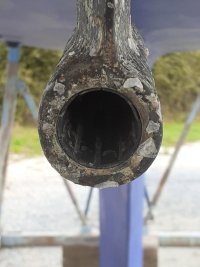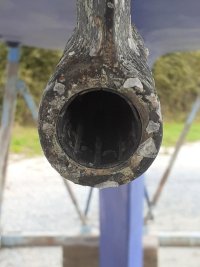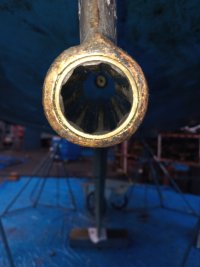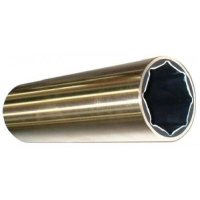Has anyone ever heard of this advice or rule? I don't recall seeing it before. In the February-March 2018 issue of Boat U.S. magazine there is a sidebar on page 100 that states the spacing between strut and prop hub should not be more than the diameter of the shaft. "Otherwise the shaft could eventually break from the prop's stress." The picture appears to be of a sailboat with a 2-blade fixed prop.
For most of us that distance would be an inch or less spacing. I am not at all worried about this because mine has been as pictured below for almost as long as I've owned the boat - more than 10 years. Before that the prop was about an inch further away on the same shaft. I'm wondering if this statement is crazy conservative or is based on older advice before stainless steel shafts were commonly used in small boats? I was surprised to see such a statement.
Here is a recent picture of my prop and strut. The shaft is 1" diameter.
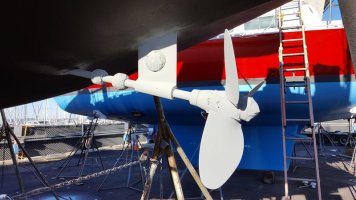
For most of us that distance would be an inch or less spacing. I am not at all worried about this because mine has been as pictured below for almost as long as I've owned the boat - more than 10 years. Before that the prop was about an inch further away on the same shaft. I'm wondering if this statement is crazy conservative or is based on older advice before stainless steel shafts were commonly used in small boats? I was surprised to see such a statement.
Here is a recent picture of my prop and strut. The shaft is 1" diameter.



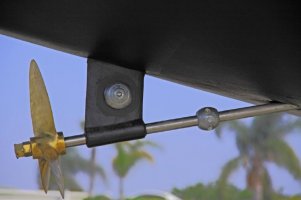
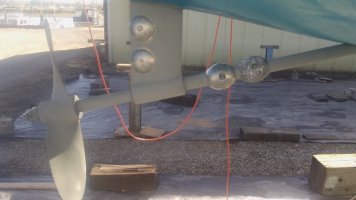
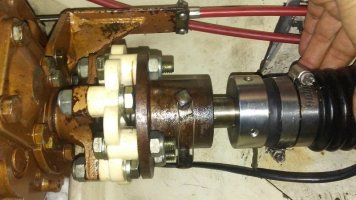
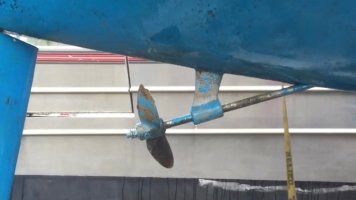
 Honest! It has always been trouble free when in the water.
Honest! It has always been trouble free when in the water.